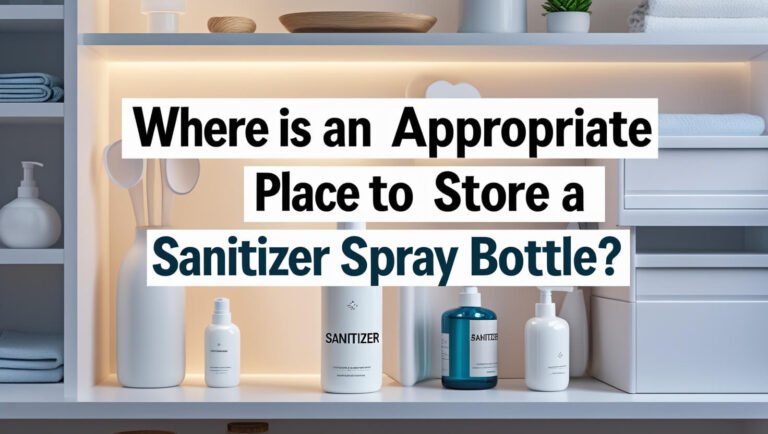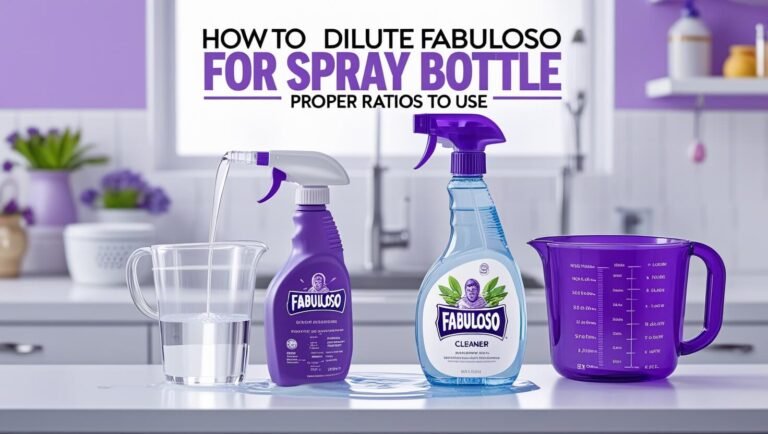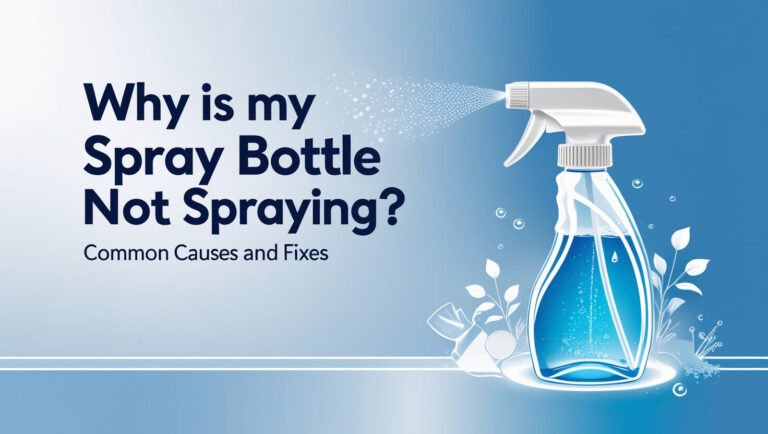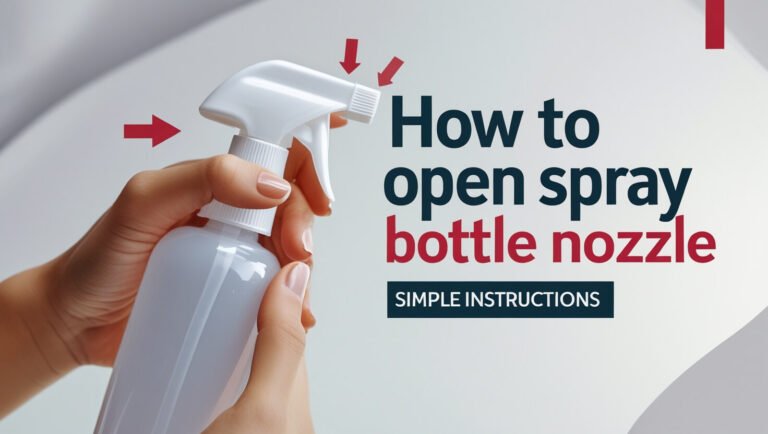What Must The Food Worker Include On Each Spray Bottle?
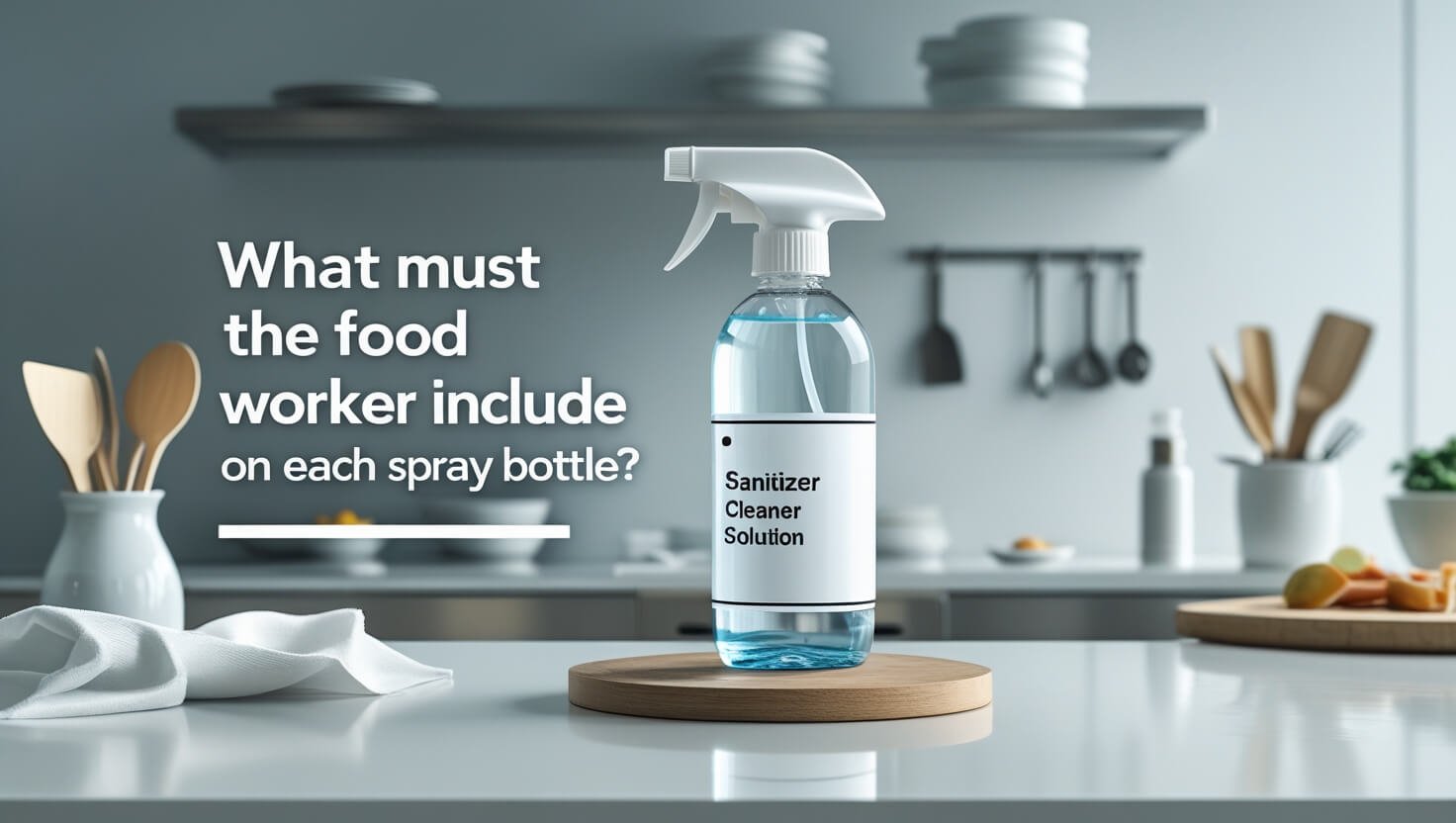
What should food workers put on spray bottles to follow food safety rules? It’s important to label spray bottles correctly to prevent accidents. This ensures the safe use of chemicals and sanitizers.
The FDA says labeling spray bottles clearly is key. Food workers need to include the chemical name, its concentration, and any hazard warnings. Following these rules helps keep food safe and prevents accidents.
Required Information for Food Service Spray Bottles
Proper labeling of spray bottles is key in food service to keep food safe. It helps workers know what’s in the bottle and how to handle it right. Food safety rules say the label must list the chemical name, how much is in it, when it was made or will expire, and any safety warnings.
Labeling is very important. Clear and accurate labeling stops chemicals from getting into food. In fact, 91% of food workers say good labeling is key for safe use of cleaning products. Here’s what should be on the label:
- Chemical name and concentration
- Date of preparation or expiration
- Safety classifications
With this info on the label, workers can safely use the spray bottle. They follow food safety rules and make sure they have the right info.
| Information | Importance |
|---|---|
| Chemical name and concentration | Identifies the contents of the bottle |
| Date of preparation or expiration | Ensures the product is used within a safe time frame |
| Safety classifications | Provides warning of possible dangers |
Safety Symbols and Warning Labels
Labeling compliance for food workers is key in chemical safety standards. The label must be clear and easy to see. It should have warnings like “Caution: Keep Out of Reach of Children” and “Use Only With Adequate Ventilation.” OSHA rules say secondary containers need labels, except in cases where the person who moved the chemical uses it right away.
The GHS-compliant label has six main parts: Product Identifiers, GHS Pictograms, Signal Words, Hazard Statements, Precautionary Statements, and Supplier Identification. Signal words show how serious the chemical hazard is, with just “Danger” or “Warning.” Hazard statements explain the hazards of a chemical. Precautionary statements give specific advice on how to handle chemicals safely.
- Product Identifiers: include the product name and any additional technical or manufacturer-specific identifying information
- GHS Pictograms: indicate the type of hazard a chemical presents, with 9 standardized pictograms available for use
- Signal Words: indicate the severity of the hazards presented by the chemical, with only two options: “Danger” or “Warning”
By using safety symbols and warning labels, food workers can spot hazards fast. This helps them follow chemical safety standards and labeling rules for food workers.
What Must the Food Worker Include on Each Spray Bottle
Proper labeling of spray bottles is key in the food industry. It ensures safety and follows regulations. Each spray bottle label should have essential spray bottle details like the chemical’s name, how to use it, and first aid tips.
Food workers need to know what’s on the label. This includes the business name, chemical name, EPA number, and how much is in the bottle. They also need instructions for use and first aid info. This helps them use the right products safely.
Primary Active Ingredients
The main ingredients in a spray bottle are important. They tell you what the product does and its risks. Food workers should know these ingredients to use the right product.
Dilution Ratios
Dilution ratios are also key. They make sure the chemical is used correctly. This prevents accidents and misuse.
Emergency Contact Information
Having emergency contact info is vital. Food workers should make sure the label has the business name and address. This helps in quick responses to accidents or exposure.
By following a spray bottle protocol for employees and labeling correctly, food workers keep their environment safe. This benefits both them and their customers.
Storage Requirements and Handling Instructions
Keeping spray bottles in the right place is key for a safe food service area. Food worker regulations say to store them in a cool, dry spot. This keeps them away from sunlight and out of kids’ and pets’ reach. It also makes sure the products work well.
Food workers should put spray bottles in a special place. A locked cabinet or closet is best. The Occupational Safety and Health Administration (OSHA) says employers must teach workers how to store cleaning stuff right. Important storage rules include:
- Storing spray bottles away from food and food-related items
- Keeping spray bottles in a well-ventilated area
- Regularly checking for leaks or damage on spray bottles
By sticking to these rules, food workers can avoid accidents. They keep their workplace safe and their cleaning supplies effective. Remember, proper storage and handling procedures are vital for a safe food service area.
Color Coding Systems for Different Solutions
Color coding systems help identify different solutions and stop cross-contamination. They are used in many places, like food service and healthcare. Workers can quickly find the right products and follow safety rules.
A color coding system might use red for high-risk spots, yellow for less risky ones, green for food areas, and blue for common spaces. This makes it easier to avoid cross-contamination and ensures the right products are used for each job.
Color coding systems offer many benefits. They make it easy to spot solutions, prevent cross-contamination, improve safety, and boost efficiency.
- Easy solution identification
- Prevention of cross-contamination
- Improved worker safety
- Increased efficiency
They also make training easier and cut down on mistakes. With a clear color coding system, workers can quickly find the right products. This reduces cross-contamination risks and makes the workplace safer.
| Color | Area | Risk Level |
|---|---|---|
| Red | High-risk areas | High |
| Yellow | Lower-risk areas | Medium |
| Green | Food handling zones | Low |
| Blue | Common areas | Low |
In Closing
Following food safety guidelines and labeling spray bottles correctly is key for food workers. It ensures a safe and compliant work area. By putting the right info on each bottle, like chemical names and emergency contacts, accidents can be avoided.
Proper storage and handling, along with color-coding systems, boost chemical safety. This helps prevent cross-contamination too.
Food workers are essential in keeping food safe for their customers. They manage spray bottle info and handling with care. This protects everyone’s health.
Adopting best practices helps food places create a safe culture, enhancing the dining experience for everyone.
Simple Questions:
What information must the food worker include on each spray bottle?
Food workers must list the chemical name, concentration, and any hazard warnings on each bottle. This ensures safety and follows regulations.
What are the required details for food service spray bottles?
Details include the chemical name, concentration, and the date it was made or will expire. Also, safety classifications are needed. This info helps workers use the right products safely.
Why are safety symbols and warning labels critical on spray bottle labels?
Safety symbols and labels tell workers about the product’s hazards and how to handle it safely. This reduces risks and ensures safety.
What additional information must the food worker include on each spray bottle?
Workers must add the main ingredients, how to dilute it, and emergency contact info. This info is key for using the right products and handling emergencies.
How should food workers store and handle spray bottles?
Spray bottles should be kept in a cool, dry spot, away from sunlight. They should also be out of children and pets’ reach. This prevents accidents and keeps the products working well.
How can color coding systems help food workers?
Color coding helps workers spot different solutions fast and avoid mixing them. Using standard colors and protocols for each department ensures the right products are used and safety is followed.

